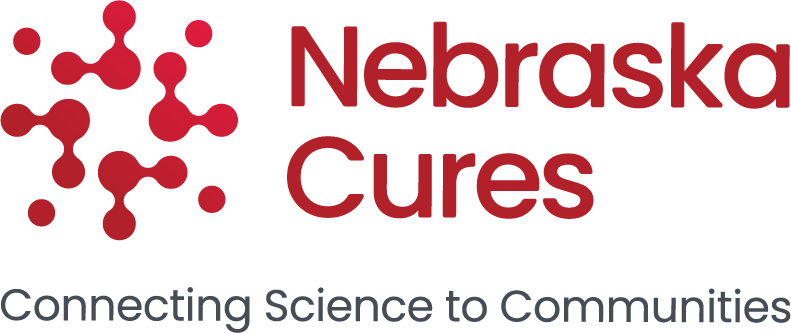by Dr. David Crouse, Nebraska Cures Board President
On June 24th, 2022, the United States Supreme Court announced that they would overturn the Roe v. Wade decision of 1973. The obvious impact of this decision was to throw the laws regulating abortion back to the states and to undermine the earlier decision of a constitutional right to personal freedom in this regard. What was predicted by numerous scientists and clinicians, and has become evident, is that there would be consequences well beyond actual “abortions” (1,2,3). The clear complication is the extreme variation in state laws or pending laws regarding abortion which has been described as an “Orwellian dystopia” (4). It becomes a real problem in states that define abortion as destruction of an embryo or fetus starting at the moment of fertilization (4, 5).
In those states that determine that life begins at conception and that destruction of an embryo at any stage is equivalent to abortion, in vitro fertilization (IVF) clinics would have significant problems because of the normal procedures used in IVF (6). For an excellent overview of IVF see the Mayo Clinic site (In vitro fertilization (IVF) – Mayo Clinic). In an IVF procedure, 10 or so eggs are collected from the female and placed in a Petri dish where they are fertilized by sperm from the selected male. Many of the eggs will join with a sperm (the moment of conception by their state law) to begin the process of embryogenesis. The fertilized eggs will be cultured for about 5 days and by visual microscopic evaluation, some of the fertilized eggs will be seen to not progress normally and will be discarded (is this “abortion”?). Occasionally, embryos will be genetically evaluated prior to use in implantation (7). When an embryo is found to have serious genetic abnormalities that would preclude normal development it is discarded (abortion?) and another healthy embryo is selected for implantation. That developed, normal fertilized egg will be implanted into the uterus of the mother-to-be and hopefully carried to a successful pregnancy and birth. The other 5-day embryos will be individually frozen for potential future use. Some families will implant one or more embryos to grow their families but often there are frozen embryos that the families no longer wish to use for their family. They may be offered to other women, used for research (embryo is destroyed – “abortion”?) or simply discarded (“abortion”?). Indeed, the presently available 496 cell lines in the NIH Stem Cell Registry (NIH Human Embryonic Stem Cell Registry – Research Using These Lines is Eligible for NIH Funding) were all derived from leftover embryos produced in IVF clinics and cleared by appropriate informed consent. These lines continue to be an effective research tool for scientists and clinicians.
It is very clear that IVF clinics in states with restrictive abortion language will not be able to operate as they currently do. In some European countries IVF is restricted to fertilizing a single egg and appropriately implanting it after culture. No excess embryos are produced. Unfortunately, this can result in an ineffective process since not every egg develops to an embryo successfully and it greatly increases cost for the patient if repeated attempts are called for. Since clinics in this country can choose a more receptive state IVF climate, it is unlikely that such a technique will be widely tried in this country.
Some scientists predict that all forms of embryonic research could be a significant legal target following the overturning of Roe v. Wade. (8). There are many aspects of IVF that have not been clarified: can leftover embryos be transported across state lines for disposal; if embryos are “abandoned” in a restrictive state, how will they be managed; how will individual restrictive states enforce such laws; and many more.
Finally, a bit of near absurdity caused by the overthrowing of Roe v Wade in the state of Georgia. Their 11th Court of Appeals recently agreed that “personhood” could be redefined to include embryos and fetuses and this would give them the same rights as those of us who are fully developed. Furthermore, “The Georgia Department of Revenue has issued guidance for people to claim embryos as dependents on their taxes. No, this is not satire.”, but an example of how extreme things can get. See Georgia allows embryos to be claimed as dependents (nypost.com). The question in Georgia may become even more complicated: if you miscarry during pregnancy will you be prosecuted for both tax fraud and abortion?
- I Glenn Cohen, Judith Daar, Eli Y Adashi. What Overcoming Row v Wade May Mean for Assisted Reproductive Technologies in the US. The Journal of the American Medical Association (JAMA). June 6, 2022, pg. E1-2.
- Lisa H Harris. Navigating Loss of Abortion Services – A Large Academic Medical Center Prepares for the Overturn of Roe v. Wade. The New England Journal of Medicine June 2, 2022, pg. 2061-2064.
- Stephanie Kirchgaessner. IVF treatment faces ‘clear and present danger’ from US anti-abortion effort. US News, May 22, 2022 (Online).
- The Editors. Lawmakers v. the Scientific Realities of Human Reproduction. The New England Journal of Medicine. June 24, 2022, pg. 1-2.
- Sarah McCammon. When Does Life Begin? Religions Don’t Agree. NPR Weekend Edition Sunday, May 8, 2022 (Online).
- Jennifer Henderson. Here’s How Abortion Laws Could Impact IVF. MedPage Today, August 2, 2022 (Online).
- JPM Geraedts. Preimplantation genetic diagnosis. Clinical Genetics, 24 Sept 2009 pg. 315-325.
- Matt Reynolds. Embryonic Research Could be the Next Target after Roe. Science, July 28, 2022 (Online).
